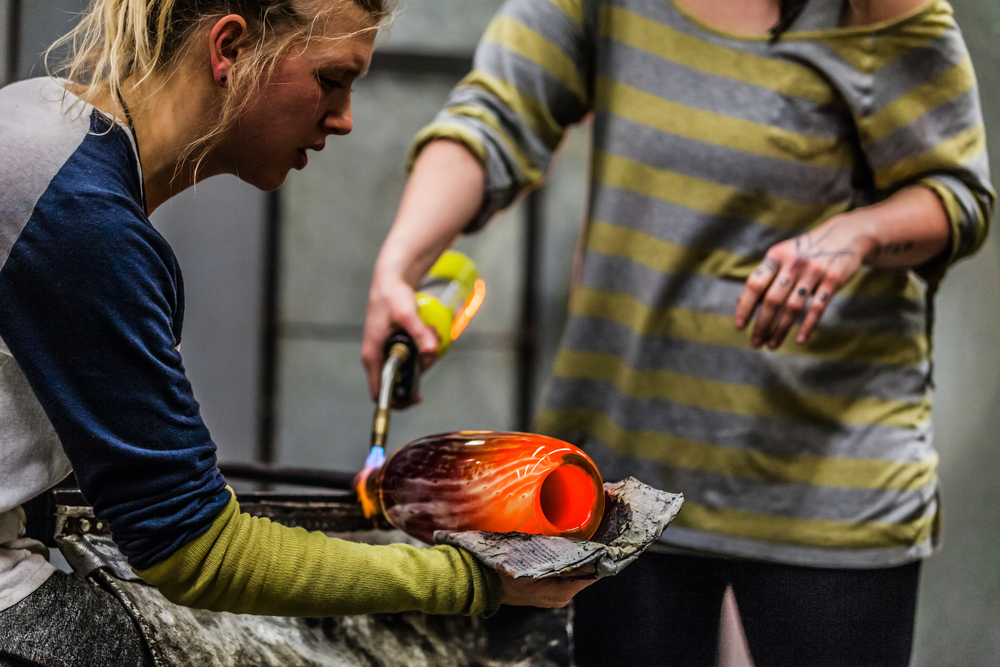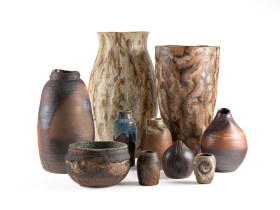Navigating skill and value is complex.
On the one hand, our arts education sector has faced years of deskilling as the pressure to meet quotas has shifted the dynamic. While on the other hand, cheap offshore production and imports have served to erode an appreciation of the maker’s hand and skill, effectively pricing them out of the market.
But is this bleak story changing, and what are some of the challenges that remain on the horizon?
Read: Do we still value skill in arts education?
Is skill coming back in to fashion?
When asked whether she thinks skill is coming back into ‘fashion’, Kristie Phelan, Head of Sturt Gallery & Studios (NSW), says, ‘Yes, I do think that there has been a swing back to valuing skill in recent years, particularly with the rise of the maker movement and the increasing interest in buying locally-made goods.
‘There is a growing appreciation for skilfully made objects, particularly among consumers who are seeking high-quality, unique and sustainable products,’ continues Phelan.
It is a view shared by Brian Parkes, CEO of JamFactory in Adelaide. ‘There has certainly been a resurgence in interest in hand-making and the handmade, and it’s happening on many levels,’ he tells ArtsHub.
‘Our shop specialises in handmade goods by Australian artists and designers, and has generated record sales year-on-year over the past few years with growth significantly above general growth in retail sales nationally,’ continues Parkes.
‘Our sales staff consistently relay information about the technical skills of the makers as an important way of assisting customers in understanding the value of individual products – and it certainly helps that visitors can watch artists at work in the glass-blowing studio adjacent to our shop!’
Phelan says that the popularity of social media platforms like Instagram have also given craftspeople a platform for connecting with a wider audience. ‘This has helped raised awareness of the value of skills-based practice along with traditional craft techniques, and has created new opportunities for makers and artisans to sell their work.’
Parkes believes that an interest in mindfulness is partly behind the shift too. ‘There’s perhaps also a reaction to the digital age and our globalised manufacturing system that makes us increasingly aware of, and even nostalgic for, the loss of specialised making skills,’ he says.
Trends versus traditions, when it comes to dollars
Phelan says, ‘In a trend-driven market, where new styles and techniques can quickly become outdated, traditional skills passed down through generations stand the test of time. There is a timeless quality to craft that goes beyond the latest trends.’
This is seen, for example, in crafted furniture ‘that will be cherished and passed down for generations, rather than ending up broken and waiting for collection on the nature strip in a couple of years,’ she says.
‘That said there is always a market for cheap, mass produced goods, and initiatives that raise awareness about the social and environmental impacts of mass produced goods, and the value of supporting local artisans, will always be welcome.’
Parkes says that we are witnessing these change in trends across the broader art market. ‘Even at the highest level, I have been delighted to see booths at contemporary art fairs increasingly showcasing work by artists and designers who have either mastered specific craft skills or collaborated with highly skilled makers.’
While niche markets can be small, ‘there is also a growing cohort who are well insulated from economic strain and this demographic has always appreciated skills associated with the production of luxury goods,’ he says. ‘Indeed, the very idea of luxury remains strongly associated with unique and bespoke hand-made goods.
‘Traditional luxury brands continue to strongly reinforce their connection to ‘fine craftsmanship’, but mostly rely on production in low-labour cost economies. There’s a growing niche in this market too, for locally produced, finely crafted bespoke goods with which owners have a stronger emotional connection – for example, a handmade pair of boots, made-to-order by one of the few remaining skilled cobblers in Australia is arguably more luxurious than the latest look from Ferragamo,’ adds Parkes.
Are we willing to pay decent dollars for skill?
The big question, as we emerge from COVID, when an appreciation of making for well-being punched into a wider community beyond the arts, is whether people still hesitate to pay for skill? And, have people become so accustomed to cheap imports that they struggle to see the value in skilfully made – albeit more expensive – objects?
Parkes tells ArtsHub, ‘We’re finding that increasingly younger people are interested in paying more for everyday objects like ceramic tableware, through a more ethical and informed consumerism. They are valuing things that are sustainable, local and well-made – things that have a story.’
But, he adds, this is ‘still a small niche – particularly in light of the current cost of living pressures and the propensity for cheaply produced imported goods – but the niche is definitely growing’.
Phelan agrees. In her experience, she says that many consumers are willing to pay a premium for handmade products with an attention to detail and the mark of the maker. ‘There has been a growing appreciation of the time, effort and expertise that goes into creating handmade products, and a recognition that these products often have a unique quality that cannot be replicated by machine-made items.
Phelan says that all of Sturt’s term classes and weekend workshops in contemporary craft are booked out in days, many with long waiting lists, ‘which reaffirms the relevance and value of making for well-being’. People are happy to pay for these experiences of learning new skills – and pay handsomely.
One third of this year’s full-time Sturt School for Wood furniture students are health workers – nurses, doctors and paramedics seeking a more meaningful, mindful work/life balance.
This is echoed by Parkes: ‘At JamFactory, over the past few years, we have seen a tremendous growth in enrolments in our various short courses, with people wanting to get hands-on and learn how to make things out of clay, glass, metal or timber… Participants in these workshops walk away with a sense of achievement, but also a greater appreciation for the skill required to make things well.’

The tricky dollar discussion of wages
Unlike the public services, or trades with structured apprenticeships and awards, the arts has never had regulation around what is pay – let alone what should be paid to artisans, artists and arts professionals.
Read: Why is there no minimum wage for a visual artist?
The campaign for an artist wage, and to be paid on an equal/or flat professional footing, has made it difficult for some makers to take on an assistant. This is especially difficult in a studio medium like glass that requires studio hire and often a number of assistants, on top of increasing energy costs, freight costs etc. It is a very tiered profession in terms of roles and levels of skill in making, but payment recognising that tier is not always reflected in assistant fees.
So a new graduate may charge the same fee to assist as someone with 20 years of experience because that is ‘the going rate’. Navigating that is difficult, as it is inappropriate today to say, ‘Look, you’re not quite at that pay rate yet. Please pull it back a little bit.’
Adding to that, makers are finding themselves in a situation where they are not getting the skill they are paying for, due to the lack of skilled assistance available.
Parkes says, ‘Paying fair hourly rates to recent university graduates for blowing glass or assisting with production of pottery is entirely appropriate in a fair and modern work environment, but it is also very challenging, as university art and design schools do not teach making skills as such and there are almost no obvious vocational training pathways for ceramics and glass.’
There is another veiled problem underlying this pay for skill pressure point. By charging the same level as a seasoned professional, recent graduates actually push themselves out of a position of growth, and they lose that career trajectory, because they price themselves out of it too early.
Aimee Frodsham, Artistic Director of Canberra Glassworks, says that there is the added challenge of losing talent ‘to the other economies, if we can’t pay them comparably’.
Read: Putting the arts in the Jobs and Skills Summit agenda
Parkes adds: ‘In the case of glass-blowing, we currently have an unmet demand for skilled labour to produce awards, products and artworks for a variety of clients, but unless we’re prepared to look at skilled migration programs, we accept that we need to pay a high labour cost and absorb a high rate of failure to contribute to the training of recent art school graduates to broaden the pool of talent we can draw on.
‘In recent years we have worked hard to increase rates of pay for very skilled makers to both recognise the value of their skill and to incentivise the attainment of skill,’ he concludes.
It is a complex landscape that is in flux, with constantly changing conditions. The challenge is not exclusive to makers, artists and writers. Ultimately, however, it is a decision that the individual maker must make – what will they accept for their ‘valued’ skill?





